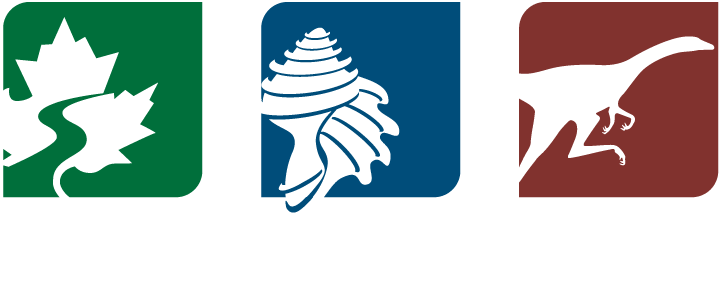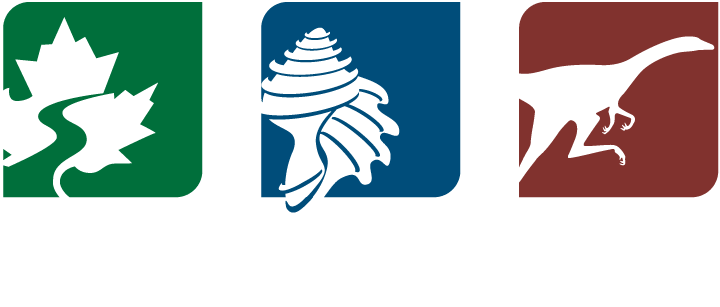Cayuga Nature Center Unveils New Dual 650-Gallon Aquaria Exhibit on Cayuga Lake Fish
FOR IMMEDIATE RELEASE
August 2, 2018
Contact: Jim Harper, PRI Marketing & Communications, jrh2@cornell.edu, (607) 273-6623 x115
Where: Cayuga Nature Center, 1420 Taughannock Blvd. (Route 89), Ithaca, NY
Website: www.priweb.org
Cayuga Nature Center Unveils New Dual 650-Gallon Aquaria Exhibit on Cayuga Lake Fish
(ITHACA, NY) Get a new view into the life in Cayuga Lake--and how it has changed over the past 200 years--at the new aquaria exhibit having its unveiling on Sunday, August 5, 2018, at the Cayuga Nature Center. The centerpieces of the new exhibit are a pair of 650-gallon aquaria that will be inhabited by the fishes of past and present Cayuga Lake. This exciting addition to the Cayuga Nature Center’s permanent exhibits lets you see into the past showing how life in Cayuga Lake looked after the last ice age, and how it has changed since the first European settlers came into the Finger Lakes region.
The exhibit is designed to give a unique opportunity to see live fishes in a representation of their native Finger Lakes environment. One aquarium represents the biota of the Lake today, and the other the biota around 300 years ago, before the major impacts of European settlers. The moment visitors enter the lobby on the first floor of Cayuga Nature Center’s Lodge, they will be intrigued and delighted with this permanent exhibit that tells the story of one specific site along Cayuga Lake at two different times: today and 300 years ago. Visitors will come away with an increased knowledge of life in and around Cayuga Lake, how it has changed in recent history, and the implications of these changes for the future of the lake.
The life-life stone façade of the exhibit models Cayuga Lake’s gorges landscape, backed by murals showing the region as it looks today and how it looked before the earliest settlers. This comprehensive exhibit also contains displays on how Cayuga Lake works as a natural system, and how human activity affects the ecology of the lake. Displays in the exhibit explain Cayuga Lake’s complex ecology and rich biodiversity. A video displays how the temperature of the lake changes as you go deeper, and the temperature variability throughout the year. Besides the species in the aquaria, displays and interactive videos inform visitors about species a number of the of fishes that are native to the Finger Lakes, as well as facts about some of the introduced species.
Cayuga Lake—38 miles long, up to 435 feet deep, and covering almost 43,000 acres—is the second largest of Central New York’s 11 Finger Lakes and among the 40 deepest lakes in the United States. The surrounding land surface that drains into the lake, the Cayuga Lake Basin, covers around 785 square miles. Although the modern landscape and biota may look stable and unchanging, this is an illusion. The lake, the land around it, and the things that live in, on, and around it, have changed greatly over the course of thousands of years.
The amazing variety of life in and around the lake appeared fairly recently (geologically speaking), after the last retreat of the glaciers around 17,000 years ago. Humans arrived in the area probably around 11,000 years ago, and caused some changes immediately. Larger changes in the region’s biota and landscape occurred with the arrival of European settlers in the late eighteenth and early nineteenth century. Today, almost all of the basin has been altered by humans to a greater or lesser degree; more than half of it is currently under active agricultural cultivation. Essentially all of the forest that once covered the region was cut down in the eighteenth and nineteenth centuries; existing forestland is almost all second growth less than 100 years old. As a result of these changes, the kinds and communities of plants and animals that live in and around Cayuga Lake today are very different than they were just two centuries ago.
Cayuga Lake is currently home to approximately 80 species of fishes, at least nine of which were introduced by humans over the past two centuries. Common natives include lake trout, Atlantic salmon, smallmouth bass, largemouth bass, perch, bullhead, bluegill, crappie, and (surprisingly) sea lamprey. Introduced species include regularly stocked game fishes (brown trout, and rainbow trout), “coldwater introductions” (alewife and rainbow smelt), and three “warmwater introductions” (common carp, grass carp, and goldfish). Both native and introduced species support substantial sport fisheries, which attract as many as 10,000 out-of-county visitors to Tompkins County each year.
Cayuga Lake is also home to a growing number of additional introduced and invasive species of plants and animals, many of which have substantial negative environmental, aesthetic, or economic impacts. These include zebra mussels, quagga mussels, Eurasian watermilfoil, and hydrilla. All of these are considered in the new exhibit and associated programming.
These changes to the Cayuga Lake bioregion are not just of historical or scientific interest. They significantly affect the health, sustainability, and human utilization of the Lake and the surrounding region. This exhibit is a place for the general public—residents and visitors—to learn about these topics and to see plants and animals within their natural environments.
Since the official merger of the Paleontological Research Institution (PRI) with CNC in January 2013, PRI has embarked on a program of rejuvenating its physical plant, programs, and mission. The goal has been to make the Nature Center into a regionally significant educational resource and year-round visitor destination. Exhibits and programs at the Nature Center are designed around the dual themes of “the natural history of the Cayuga Lake basin” and “natural history in your back yard”. These themes complement and expand on those at PRI’s other public educational venue the Museum of the Earth. Together, the Nature Center and the Museum have the potential to be a unique combination educational attraction focusing on Earth and environmental science in the broadest sense. This exhibition, and its associated programming, will be a major environmental education resource for schools and the general public.
The Cayuga Lake: Past and Present exhibition’s design and installation was done by Split Rock Studios, a nationally recognized exhibit design and fabrication firm located in St. Paul, Minnesota. The custom aquaria and their associated filtration systems were designed, built, and installed by The Aquarium Company based in Winthrop, Minnesota. PRI’s project manager for this exhibit was Helaina Blume, PRI’s Director of Exhibitions, who also did the graphic design and assisted with the exhibit design for this project.
After years in the design and planning stage, this Spring the Nature Center staff spent many hours preparing the space in the lobby, while the staff at Split Rock Studios started constructing the exhibit. The staff at The Aquarium Company custom fabricated the two massive 650 gallon tanks. Each tank has a 400 pound, 2-inch thick custom-made curved acrylic front to give a clear view of the inhabitants. Each tank also has two separate water filtration systems, as well as chiller units to keep the water at the correct temperature for the fish.
The Cayuga Lake: Past and Present exhibit was made possible by grants from the New York Economic Development Program, the Tompkins County Tourism Program, and the Triad Foundation, with additional support from Cornell University, Incodema, Inc., and individual donors.
About the Paleontological Research Institution
The Paleontological Research Institution (PRI) pursues and integrates education and research, and interprets the history and systems of the Earth and its life, to increase knowledge, educate society, and encourage wise stewardship of the Earth. PRI and its two public venues for education, the Museum of the Earth and the Cayuga Nature Center, are separate from, but formally affiliated with Cornell University, and interact closely with numerous University departments in research, teaching, and public outreach.
###

